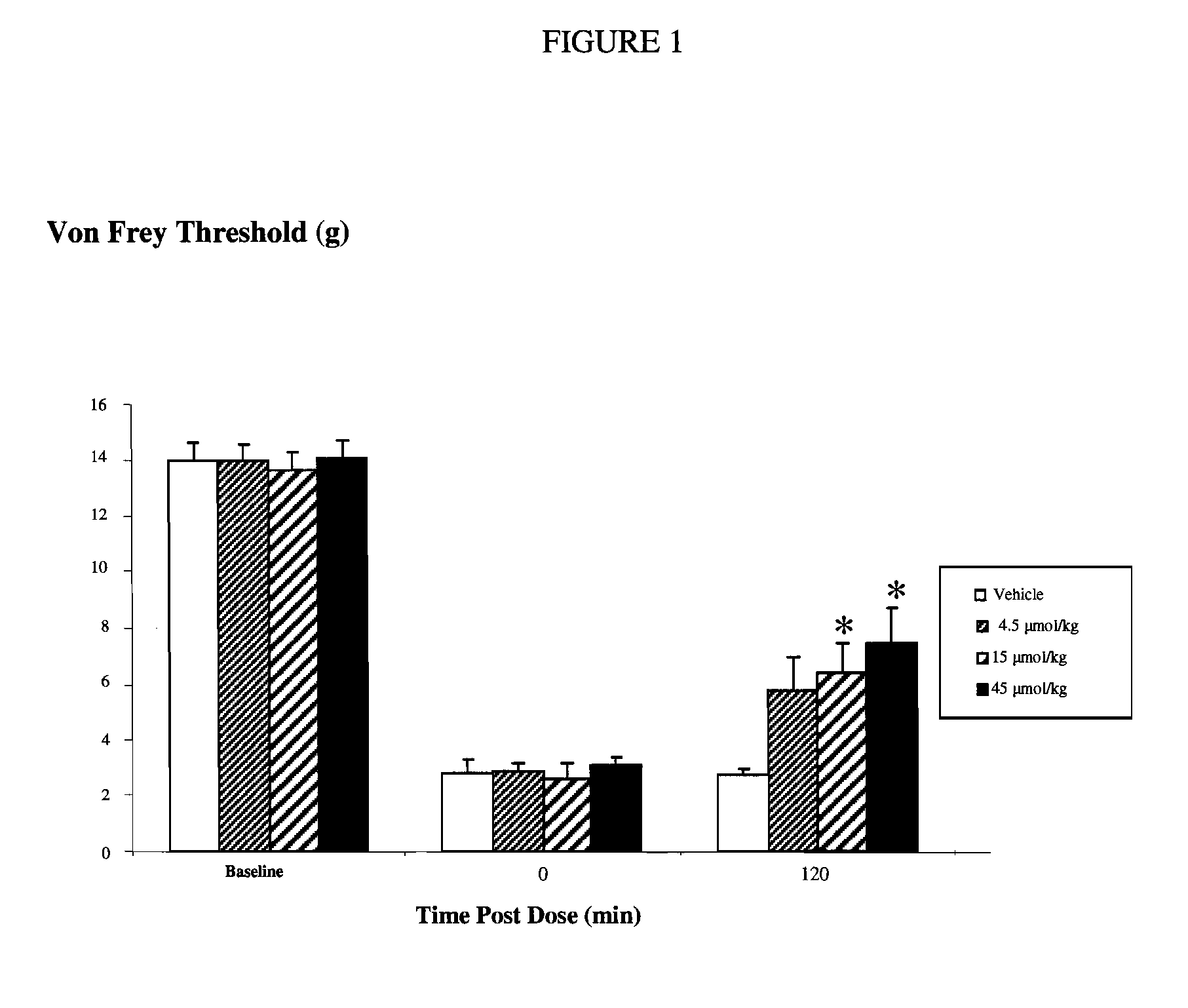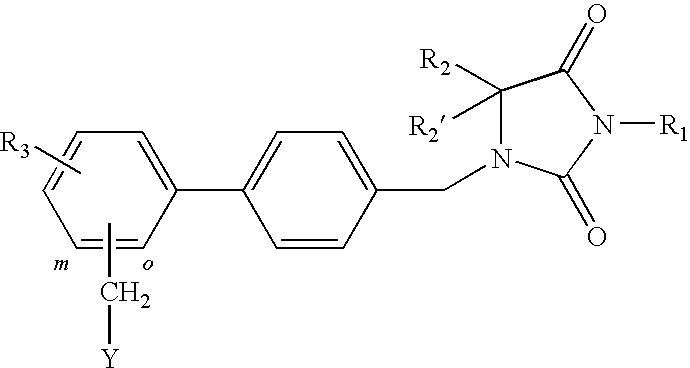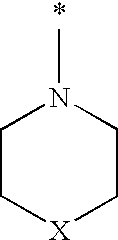1-(biphenyl-4-ylmethyl)imidazolidine-2,4-dione
a technology of imidazolidine and diphenylmethyl, which is applied in the field of 1(biphenyl4ylmethyl) imidazolidine2, 4dione derivatives, can solve the problems of gastrointestinal complications, mucosal damage, pain is an unpleasant sensory and emotional experience,
- Summary
- Abstract
- Description
- Claims
- Application Information
AI Technical Summary
Benefits of technology
Problems solved by technology
Method used
Image
Examples
example 1a
2-Amino-N-cyclopropyl-acetamide hydrochloride
[0155]i)—TBTU (5.1 g, 16.5 mmol), DIPEA (2.9 ml, 16.5 mmol) and cyclopropylamine (2.2 ml, 33 mmol) were added to a solution of BOC-Gly-OH (2.63 g, 15 mmol) in dry dichloromethane (10 ml). After 17 h stirring, the reaction mixture was concentrated under reduced pressure and water was added to the residue. The product was extracted into ethyl acetate. The combined organic phases were washed with an aqueous solution of 2M hydrochloric acid, a saturated aqueous solution of sodium hydrogen carbonate, brine, dried over sodium sulfate and concentrated under reduced pressure to give 2-cyclopropylcarbamoylmethyl-carbamic acid tert-butyl ester (847 mg). The product was used in the following step without further purification.
[0156]ii)—An aqueous solution of 2M hydrochloric acid (10 ml) was added to a solution of the product obtained in the previous step (2.2 g, 10.3 mmol) in dioxane (25 ml). After 2 h stirring the reaction mixture was concentrated u...
example 1b
2-Amino-N-cyclopropylmethyl-acetamide trifluoroacetate
[0157]The title was compound prepared from tert-Butoxycarbonylamino-acetic acid, using aminomethylcyclopropane and TFA, following procedures analogous to that described in Example 1A.
[0158]1H-NMR (400 MHz, CDCl3): δ 8.27 (s, 1H), 8.17 (s, 2H), 3.88 (s, 2H), 3.12 (d, J=6.8 Hz, 2H), 0.99 (m, 1H), 0.53 (m, 2H), 0.23 (m, 2H).
example 2
1-(2′-(Morpholin-4-ylmethyl)biphenyl-4-ylmethyl)-3-propyl-imidazolidine-2,4-dione
[0159]
[0160]i)—To a solution of 2-bromo-benzylalcohol (5 g, 26.7 mmol) in 2-methoxyethanol / water (30 ml, 1 / 1) were added 4-formylphenylboronic acid (6 g, 40.0 mmol) and sodium bicarbonate (4.4 g, 52.4 mmol) under a nitrogen atmosphere. After (Ph3P)4Pd (1.54 g, 1.34 mmol) was added, the reaction mixture was heated under reflux for 17 h. After cooling, the mixture was filtered over dicalite and the residue was washed with water and ethyl acetate. The product was extracted into ethyl acetate. The combined organic phases were washed with brine, dried over magnesium sulfate concentrated under reduced pressure. Column chromatography afforded 2′-hydroxymethyl-biphenyl-4-carbaldehyde (3.95 g).
[0161]ii)—A solution of the product obtained in the previous step (2 g, 9.4 mmol) in dry dichloromethane (100 ml) evacuated and flushed with nitrogen 2 times. The solution was cooled to −15° C. under nitrogen. Methanesulfo...
PUM
| Property | Measurement | Unit |
|---|---|---|
| temperature | aaaaa | aaaaa |
| temperature | aaaaa | aaaaa |
| temperature | aaaaa | aaaaa |
Abstract
Description
Claims
Application Information
 Login to View More
Login to View More - R&D
- Intellectual Property
- Life Sciences
- Materials
- Tech Scout
- Unparalleled Data Quality
- Higher Quality Content
- 60% Fewer Hallucinations
Browse by: Latest US Patents, China's latest patents, Technical Efficacy Thesaurus, Application Domain, Technology Topic, Popular Technical Reports.
© 2025 PatSnap. All rights reserved.Legal|Privacy policy|Modern Slavery Act Transparency Statement|Sitemap|About US| Contact US: help@patsnap.com



